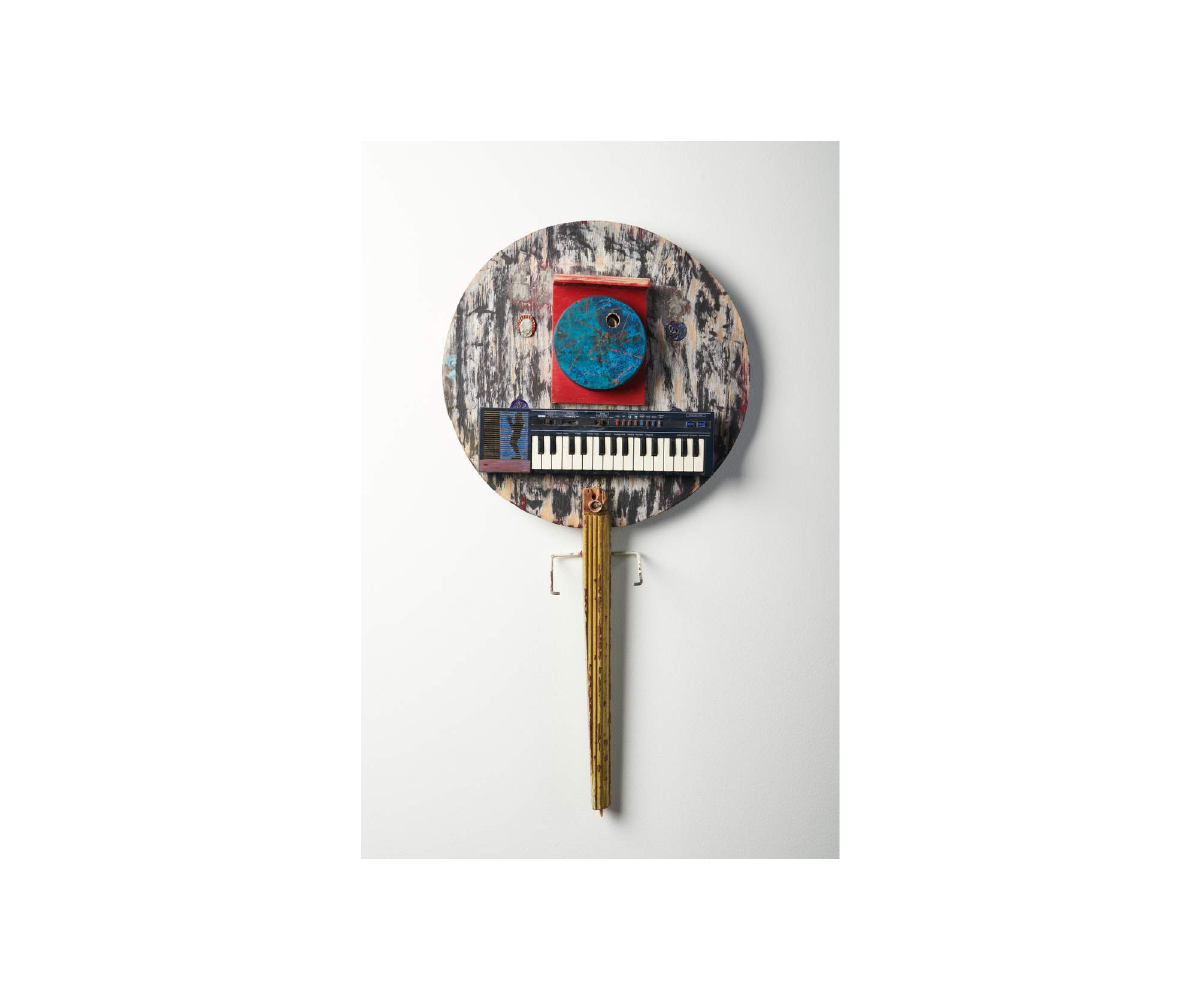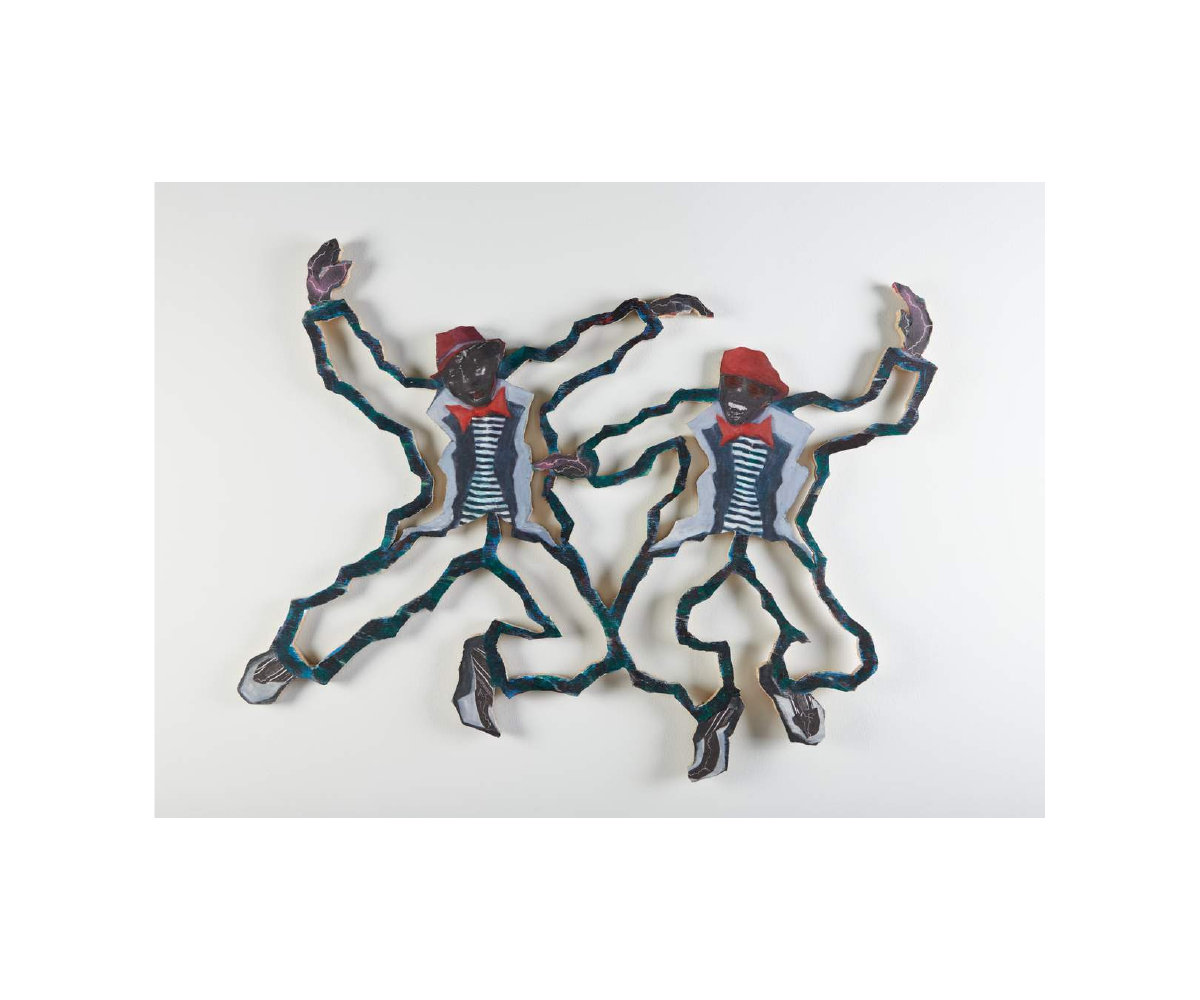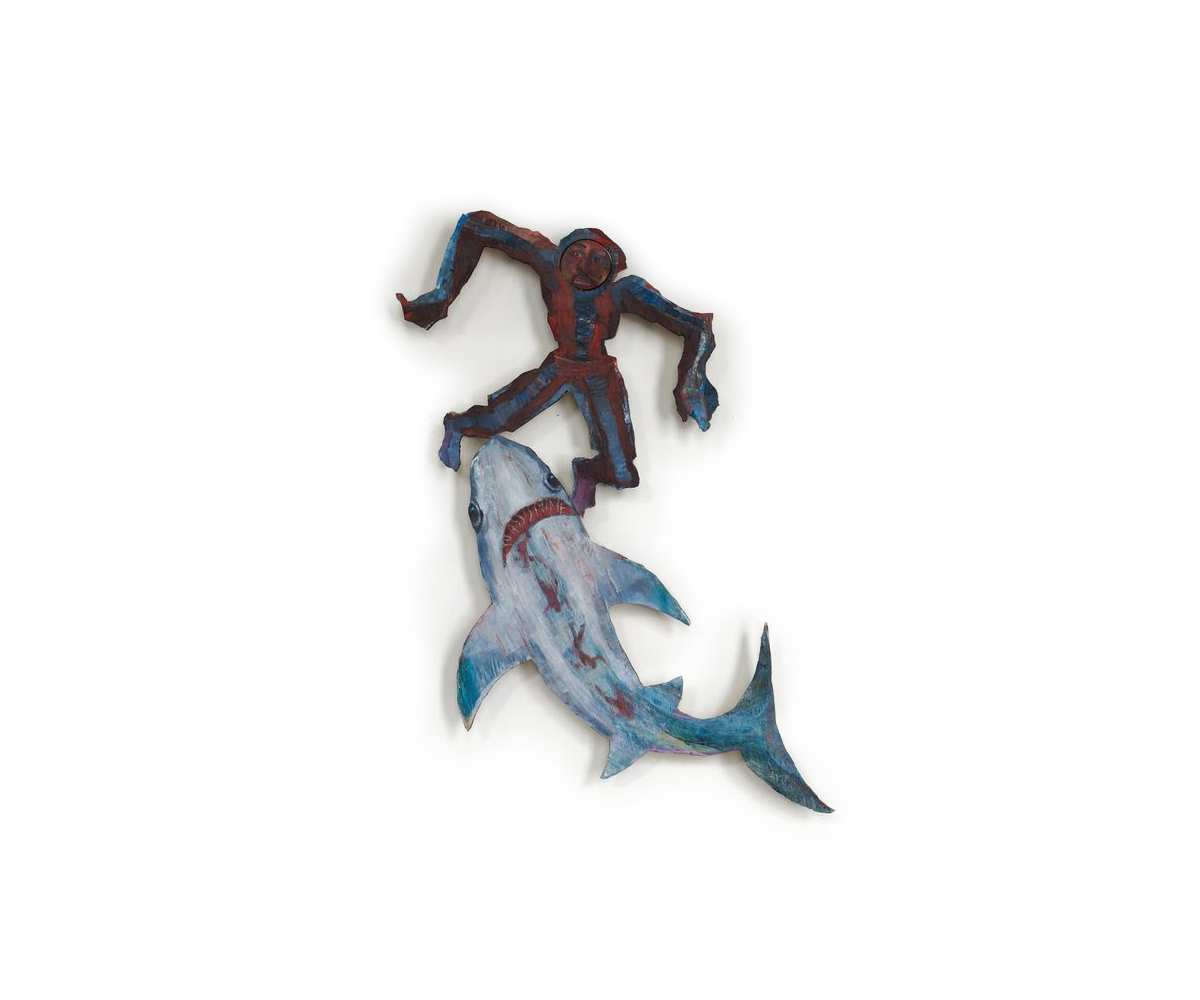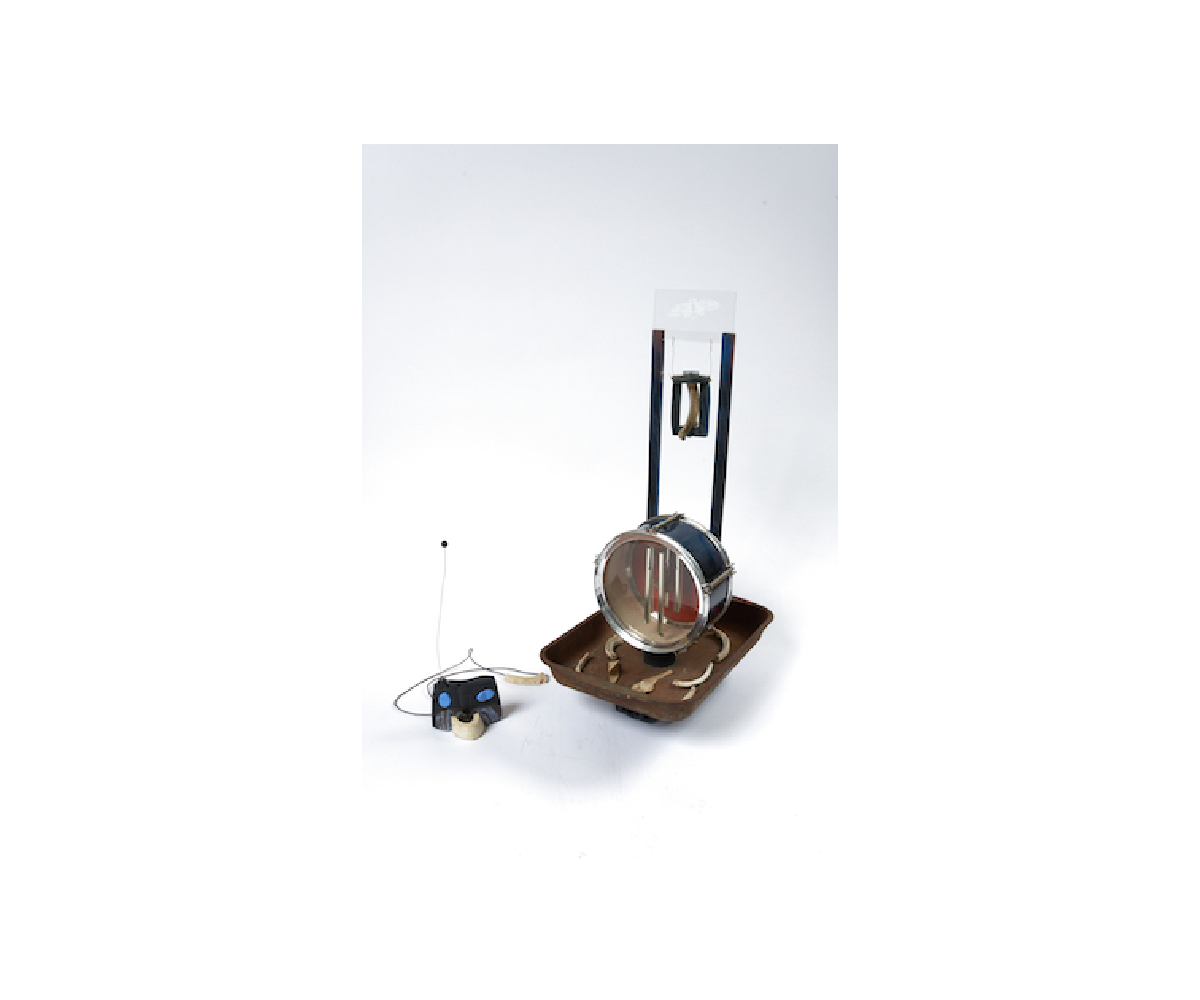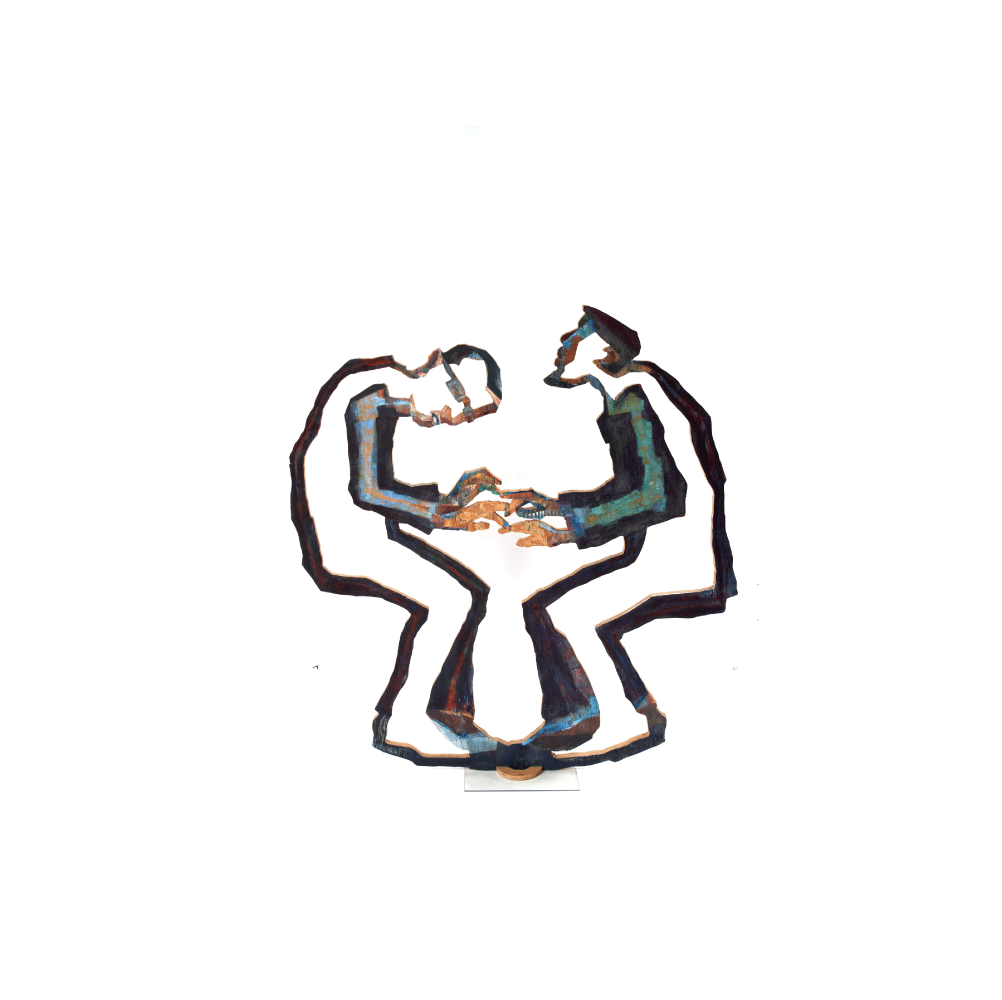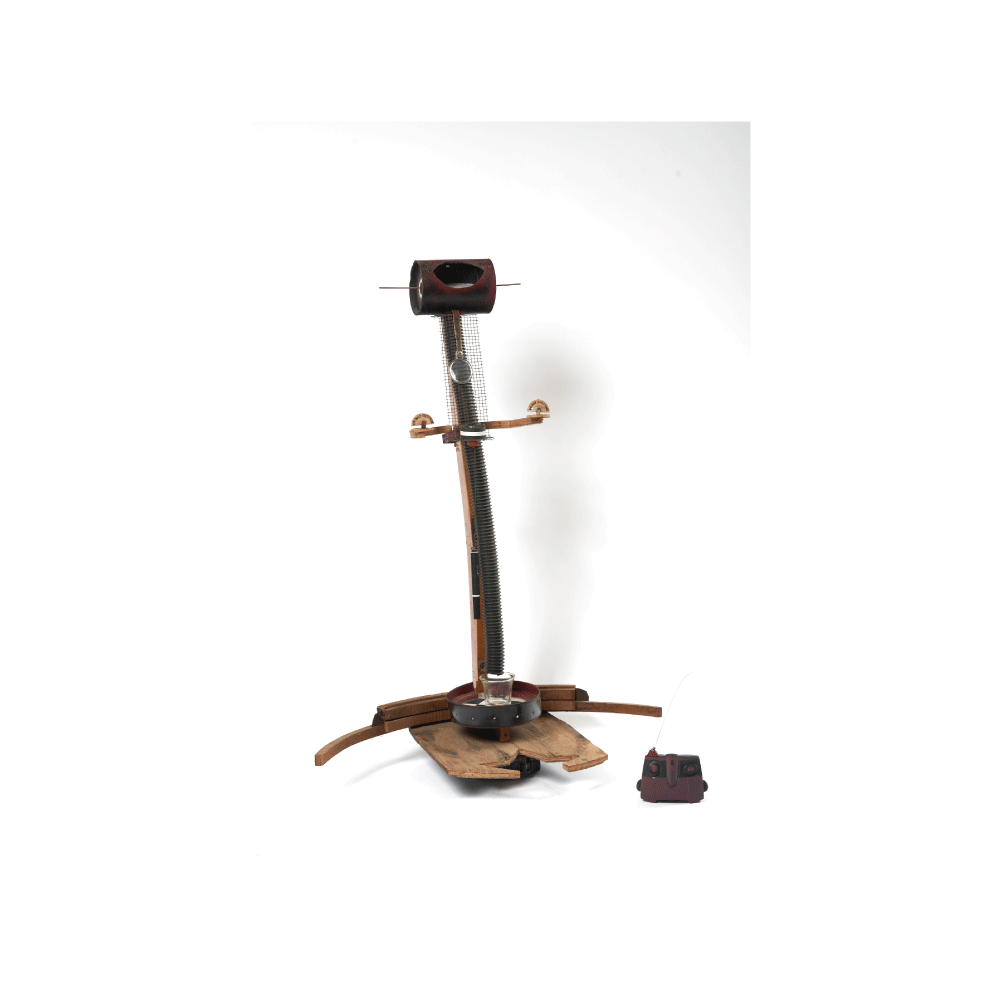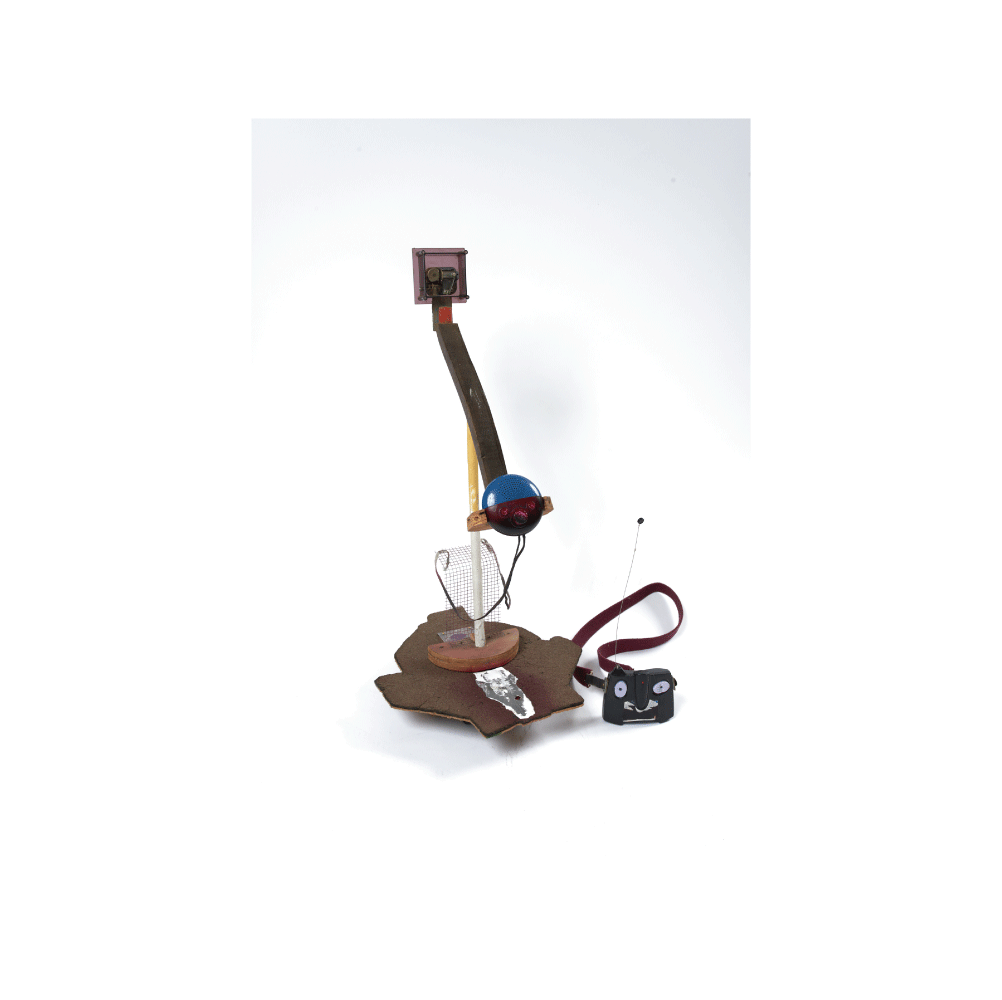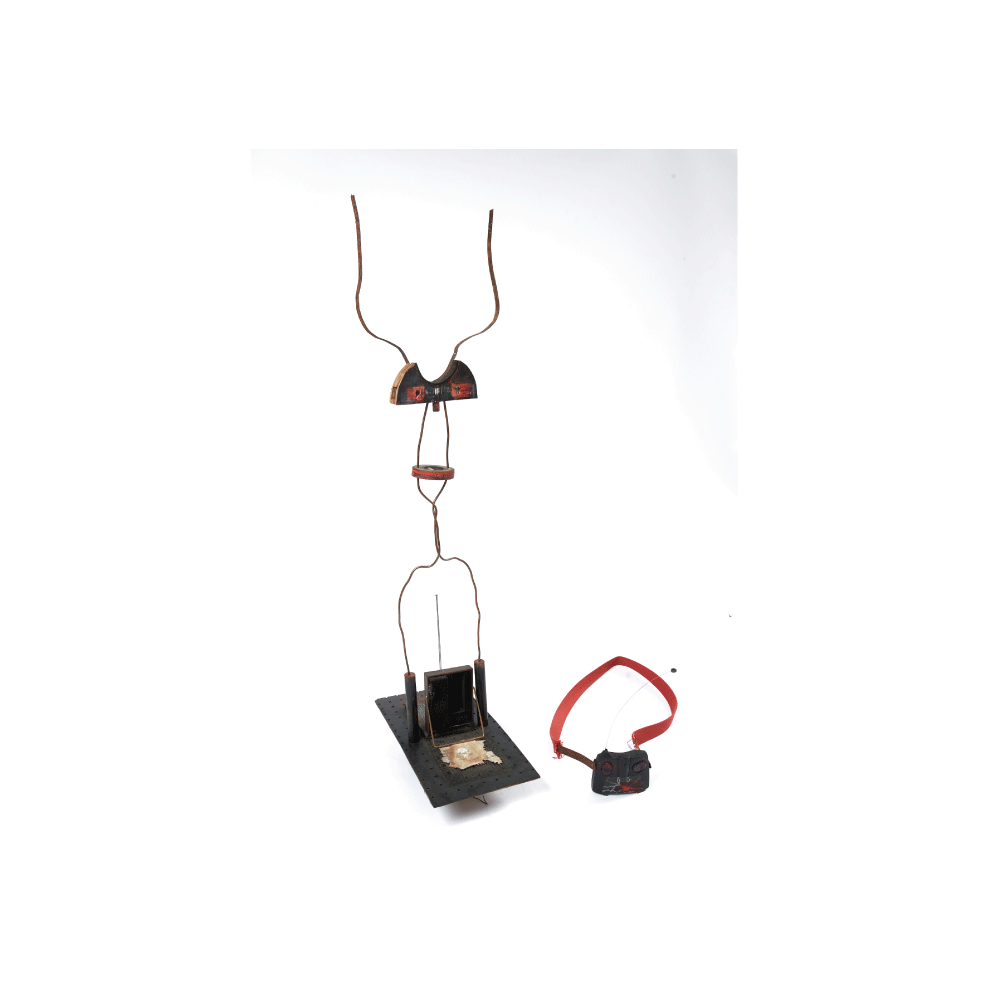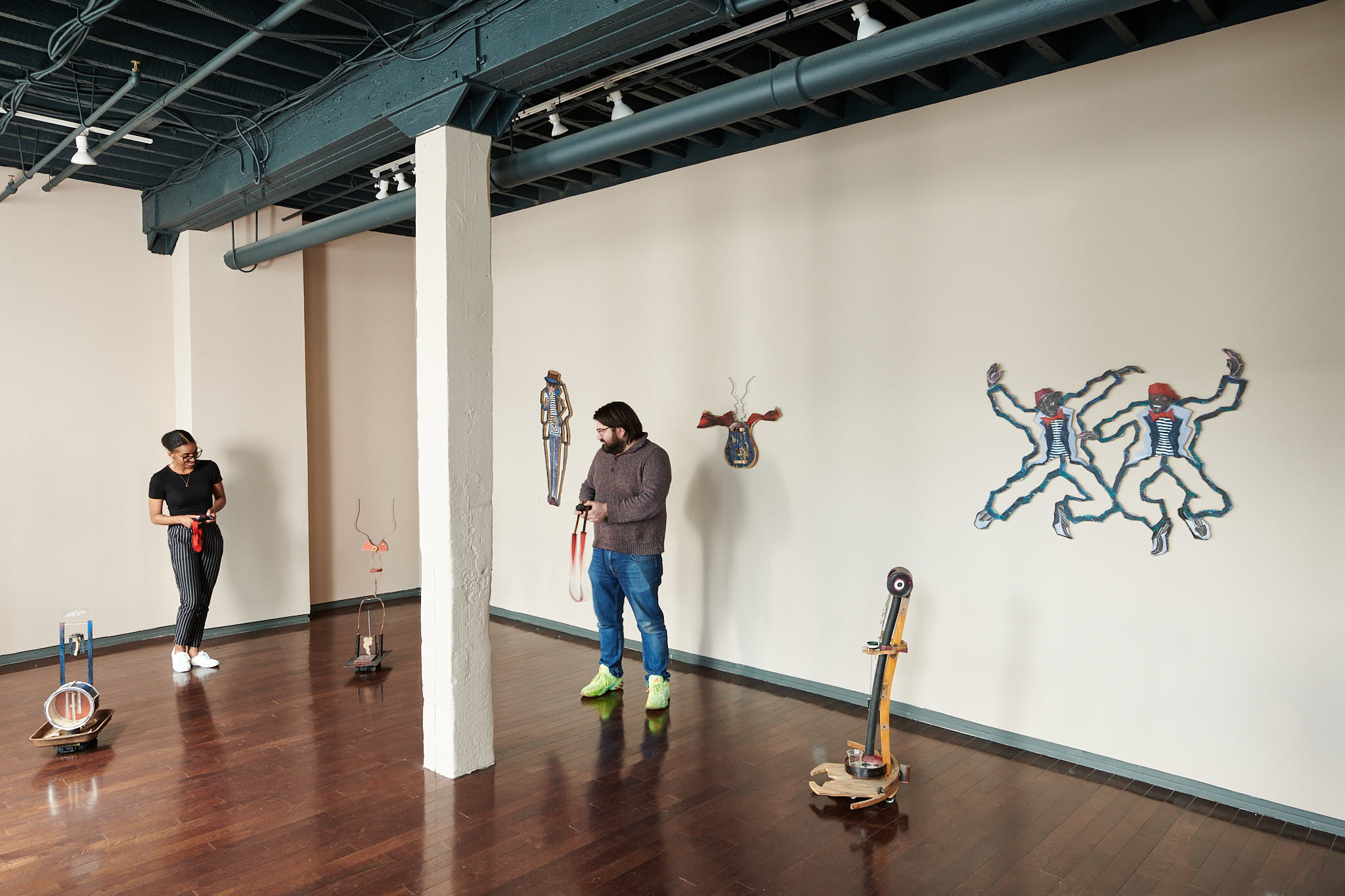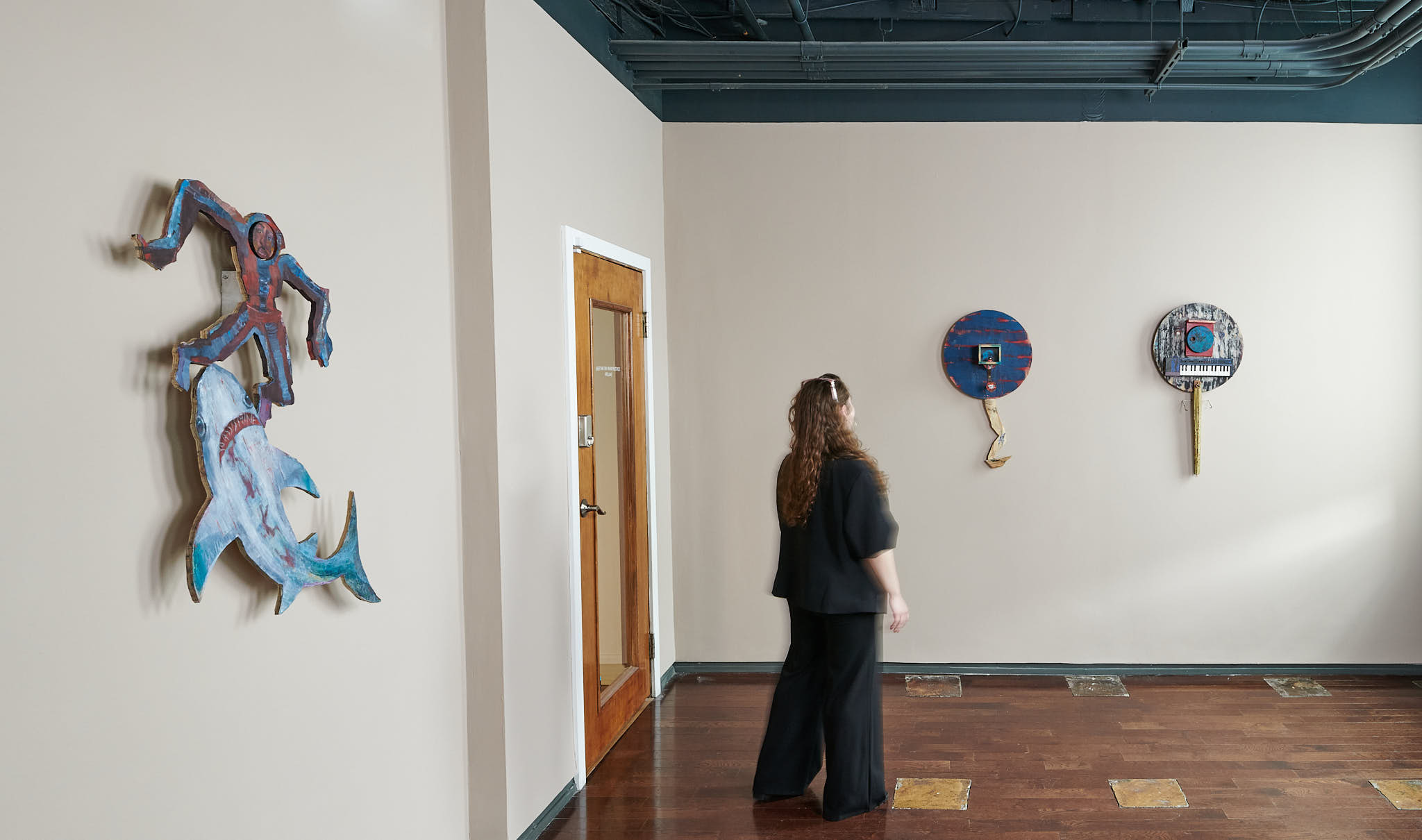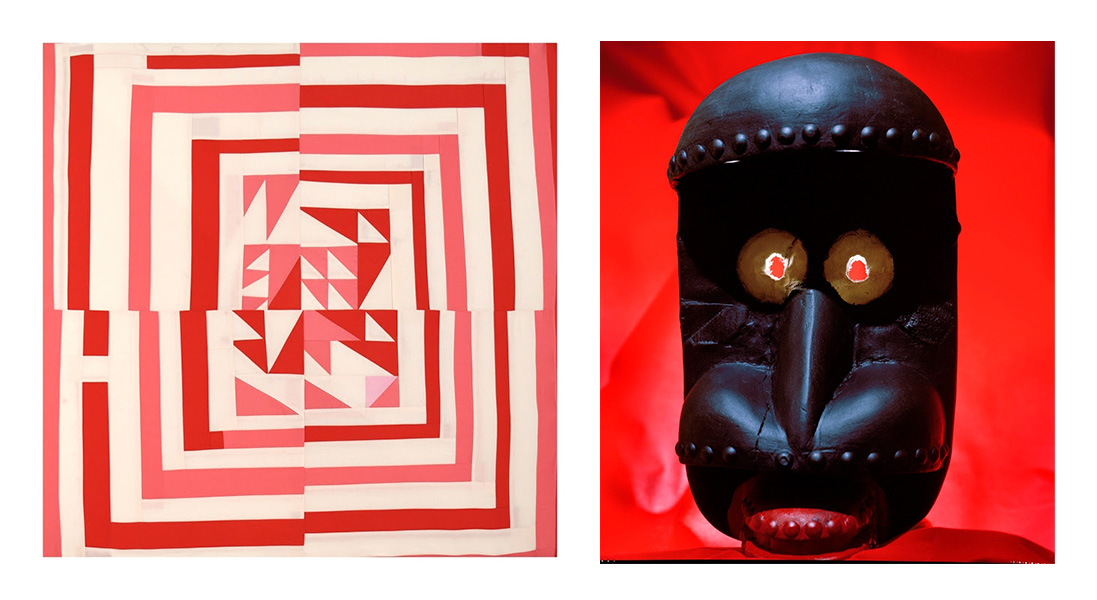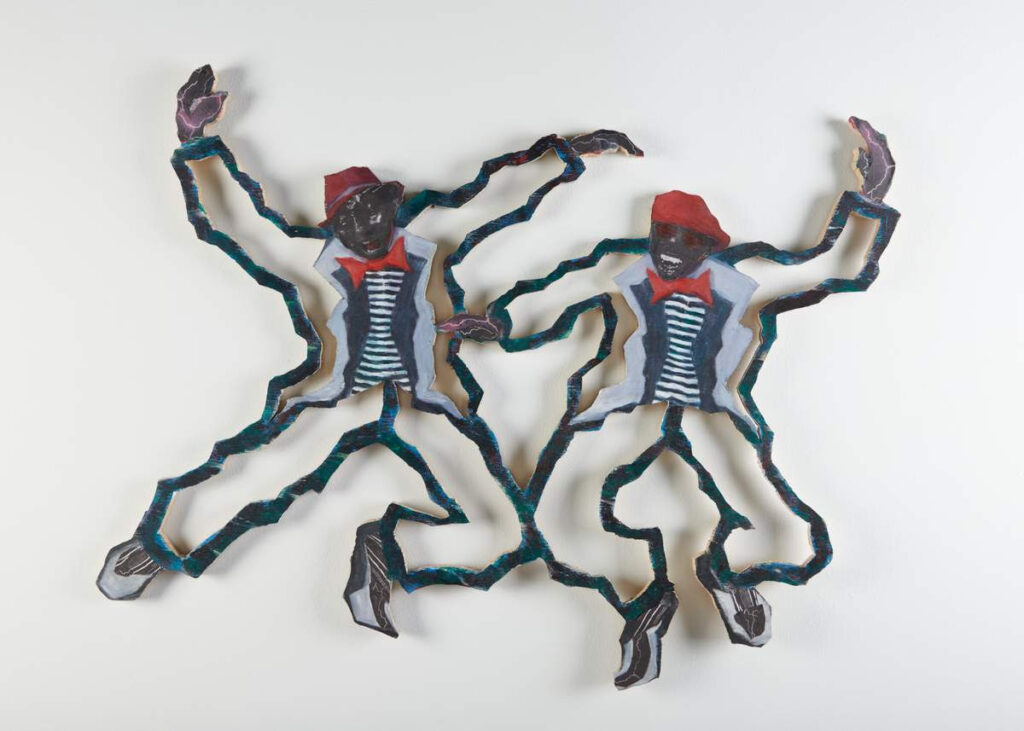
February 22 – March 29, 2024
Bruce Robinson:
Flying Home
Contemporary Art Matters is delighted to present ‘Bruce Robinson: Flying Home’, featuring new painted sculptures that address contemporary art and culture, African American history with a special emphasis on music. Included in the show are new paintings and mobile assemblages. The exhibition will open with an Instagram Live artist’s conversation with Mark Lomax* on Thursday, February 22 at 4:30 pm, followed by a gallery reception from 5–7 pm. The show will be on view through March 29th, 2024.
In the exhibition
Installation views
Robinson’s approach to art making is driven by his curiosity, the process of discovery and the use of tactile materials as vehicles of expression. He is known for his unique multi-media style combining assemblage, painting, shaped plywood and collage. The paintings represent the transformation of rigid plywood into supple rhythmic images.
“Each work has levels of content and offers the viewer an opportunity to share in the discovery process I experienced in making them,” offers Robinson.
‘Flying Home’ was inspired by the famous Nicholas Brothers from the Big Band Era, whose acrobatic technique called ‘flash dancing’ made them among the greatest dancers of the 20th Century. The energy of the dancers is matched by Robinson’s process employed to create it. The two figures are outlined in carved plywood, with painted costumes and collaged elements. The hands and feet convey the energy of the dancers by using photographs of lightning. The collaged faces have exaggerated expressions that match the painting’s dynamic qualities. As in much of Robinson’s work, the techniques and approaches lead to an overall celebration of the rich contributions of African American art and culture.
‘Juke’ resembles a musical instrument with its guitar-like shape. The found materials add a playful element, evoking a Rorschach-like form and red plywood wings. The rudimentary guitar string conjures the history of homemade instruments. The collaged face of James Baldwin and the carved words on the front of the piece are a nod to both oral and literary traditions. The title of the piece itself demonstrates the artist’s play on multiple interpretations of the work, the process and the art itself. The overall effect, like much of his work, prods us to consider the deeper questions of our time.
Robinson is a collector of objects found in second-hand shops and flea markets. These objects find their way into his works. In ‘Linchpin #1’, there is an electric keyboard that functions on numerous levels. We are engaged to participate with the piece, as the keyboard actually works! It also is part of the design of the piece, perhaps part of a face smiling back at you. The central object has a hole cut out revealing collage elements hidden inside. There are often ocular elements to his work as he is fascinated by the way we see, and the tools that play with the eye. Like other important artists who work with assemblage, Robinson explores the social, political and historical underpinnings of America’s collective memory.
Bruce Robinson is a Professor Emeritus at the Columbus College of Art & Design, where he mentored generations of young artists until his retirement in 2010. He has a BFA from the Kansas Art Institute and an MFA from Indiana University. Robinson is the recipient of an Individual Excellence Award from the Ohio Arts Council, and has exhibited his work nationally and internationally. His work has been included in numerous exhibitions including ‘Ohio Diaspora’ at the Riffe Gallery. He had a solo exhibition ‘Bruce Robinson: Flutterby’ at the Pizzuti Collection of the Columbus Museum of Art in 2021-2022.
* Mark Lomax II is a critically acclaimed musician, composer, activist and educator based in Columbus. His vast opus ‘400: An Afrikan Epic’, an ambitions 12 album musical project, delved into the story of black America from the the roots in Africa, through the slave trade and into the present. He was awarded a Wexner Center Residency in 2018 in support of this project. He has performed all over the country with gospel choirs and important jazz artists.

